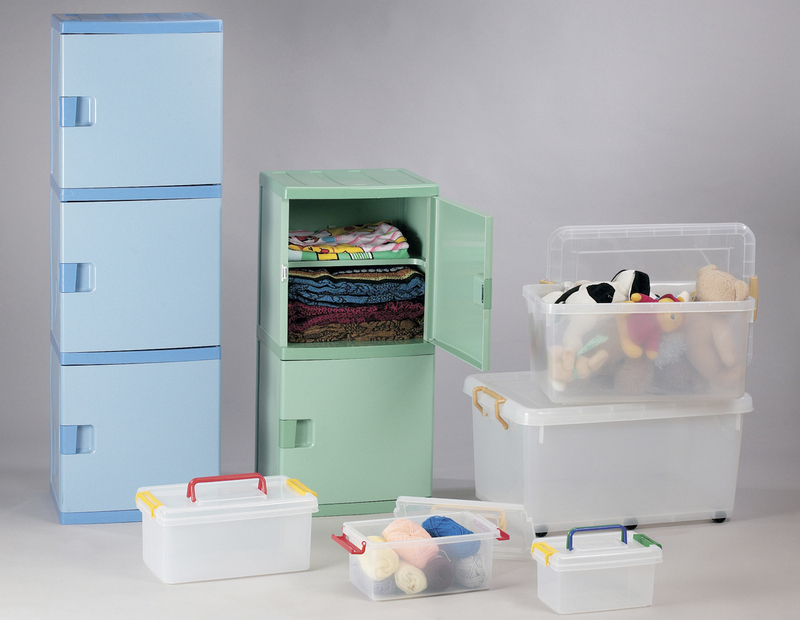Packing Secrets for a Smooth and Successful House Move
Posted on 18/05/2025
Packing Secrets for a Smooth and Successful House Move
Moving house is both an exciting new chapter and a daunting task, especially when it comes to packing. Whether you're relocating across the street or venturing to a different city, the process can quickly become overwhelming without the right strategy. Fortunately, with the correct approach, you can transform your house move into a streamlined, stress-free experience. In this comprehensive guide, you'll discover packing secrets, organizational tips, and pro strategies to ensure a smooth and successful house move.
Why Effective Packing Matters in a House Move
Many people leave packing until the last minute, often leading to a chaotic moving day. Efficient packing not only protects your belongings but also saves time, reduces stress, and helps you settle into your new home quicker. By learning the packing secrets for a hassle-free move, you're setting the stage for an organized and positive experience.
Key Benefits of Proper Packing
- Protects your valuables from breakage and damage
- Provides peace of mind
- Makes unloading and unpacking more straightforward
- Helps you stay organized throughout the house move
- Saves money by preventing losses and unnecessary purchases

Secret #1: Plan Your Packing Timeline Ahead
The ultimate packing secret is to start early. Creating a clear packing schedule can prevent last-minute panics and allows you to tackle the process in manageable segments.
How to Create a Packing Timeline
- Begin planning at least 4-6 weeks before your move.
- Assign each room a week for packing.
- Set daily goals to keep everything on track.
- Build in extra time for unexpected delays or sorting through sentimental items.
Remember: The earlier you begin, the smoother your house move will be!
Secret #2: Declutter and Downsize Before You Pack
Packing is the perfect opportunity to declutter. Moving unnecessary items only adds to your workload and increases costs. Go through each room and decide what to keep, donate, sell, or toss. Lightening your load now saves time, money, and effort on moving day.
Decluttering Hacks
- Sort items into four piles: Keep, Donate, Sell, Discard.
- Use the "one-year rule": If you haven't used it in a year, consider letting it go.
- Organize a garage sale or sell items online.
- Donate gently used items to local charities.
Secret #3: Invest in Quality Packing Supplies
Don't cut corners when it comes to packing materials. Durable boxes, bubble wrap, packing paper, sturdy tape, and markers are essential. Quality packing supplies can save your valuable belongings from damage and make the entire process easier to manage.
Must-Have Moving Supplies
- Assorted sizes of moving boxes
- Packing tape and tape dispensers
- Bubble wrap and packing paper
- Furniture blankets or pads
- Permanent markers and labels
- Plastic wrap for securing drawers and containers
- Scissors and box cutters
- Stretch wrap for awkwardly shaped items
Secret #4: Master the Art of Organized Packing
Randomly throwing items into boxes is a surefire way to create chaos both before and after your house move. Organized packing ensures nothing gets lost, broken, or forgotten.
Top Strategies for Packing Like a Pro
- Pack by room: Keep items from each room together to simplify unpacking.
- Label every box: Include the room, a brief description of contents, and handling instructions (e.g., fragile).
- Color code boxes: Use colored tape or labels for different rooms.
- Create an inventory list: Number your boxes and keep a corresponding list to track their contents.
- Leave everyday essentials for last: Pack things you use daily in a clearly marked "essentials" box.
Bonus Tip: Create a First Night Survival Kit
- Toiletries (soap, toothbrush, toothpaste)
- Chargers for electronics
- Snacks and water bottles
- Bed linens, towels, and pajamas
- Medicines and important documents
Having these items on hand prevents unnecessary rummaging through boxes after a long moving day.
Secret #5: Protect Fragile and Valuable Items
Accidents can happen during the house moving process. Packing fragile items with extra care ensures they arrive intact in your new home.
How to Pack Fragile Items
- Wrap items individually in bubble wrap or packing paper.
- Add padding to the bottom and sides of boxes.
- Don't overfill boxes; leave a little space for cushioning.
- Mark boxes "FRAGILE" on all sides in bold letters.
- Use specialty boxes for dishes, glassware, and artwork.
- Transport valuable or irreplaceable items yourself, if possible.
Pro Tip: If you're unsure, ask your moving company if they offer custom crating services for particularly delicate or expensive items.
Secret #6: Disassemble Large Furniture Early
Attempting to move large pieces of furniture intact can be unwieldy or even dangerous. If possible, disassemble beds, tables, or shelves before moving day. Place hardware in labeled plastic bags and tape them to the corresponding piece of furniture.
Step-by-Step Guide to Disassembling Furniture
- Read the manufacturer's instructions - many are available online.
- Take photos or videos as you work for easy reassembly.
- Keep screws, bolts, and small parts in labeled bags.
- Wrap pieces in blankets or bubble wrap to avoid scratches.
- Label each part for quick identification at your new home.
Secret #7: Smart Strategies for Packing Clothes and Linens
Clothing and linens are often overlooked in the moving process. Fortunately, there are efficient ways to keep them organized, wrinkle-free, and easy to pack.
Game-Changing Packing Tips for Clothing
- Leave clothes on hangers: Bundle sections with garbage bags or specialized wardrobe boxes.
- Use suitcases and duffel bags: Take advantage of all your luggage for packing clothes, shoes, or even books.
- Roll instead of folding: Rolling clothes can save space and prevent wrinkles.
- Use linens for padding: Wrap breakables with towels, sheets, or pillowcases for added protection.
Secret #8: Don't Forget About the Kitchen
Kitchens often take the longest to pack due to the sheer volume of items and fragility of glassware, dishes, and appliances. A methodical approach to packing your kitchen will keep things running smoothly.
Kitchen Essentials Packing Checklist
- Start by packing rarely used gadgets and seasonal items.
- Use sectioned boxes or dish packs for glassware and plates.
- Wrap sharp knives in dish towels and secure with a rubber band before packing.
- Pack your pantry last--use up, toss, or donate non-perishables as you go.
- Clearly label boxes with content and handling instructions.
Pro Secret: Defrost and clean your refrigerator and freezer 24-48 hours before moving day to prevent leaks and odors.
Secret #9: Keep Valuables and Important Documents Separate
During a house move, it's easy to misplace critical documents or valuables. These include passports, insurance policies, financial papers, jewelry, and sentimental keepsakes. Always keep these items with you or in a clearly marked "important" box that you'll transport yourself.
How to Organize Essential Documents
- Use a fireproof safe, locking file box, or sturdy folder for personal documents.
- Back up vital digital files to a secure cloud account or flash drive.
- Record a digital inventory of jewelry or sentimental items for insurance purposes.
Secret #10: Enlist Professional Help When Needed
Sometimes, the best secret for a smooth and successful move is to bring in the pros. Full-service moving companies can pack, load, transport, and unload your belongings, saving precious time and energy. Even if you're on a budget, you can often hire help for only the trickiest tasks, such as moving heavy furniture or fragile artwork.
How to Choose the Right Professional Movers
- Research online reviews and ask friends or family for referrals.
- Get several in-home estimates and compare services, prices, and insurance coverage.
- Ensure the company is properly licensed and insured for your area.
- Ask about options for packing, specialty items, or storage if needed.

Bonus Packing Secrets for a Seamless House Move
- Take photos of electronic setups (TV, computers) to make rewiring a breeze after the move.
- Use plastic wrap on liquids before screwing lids on bottles to prevent leaks.
- Fill nail holes and clean as you pack to avoid last-minute cleaning marathons.
- Maintain a box or bag for last-minute items to quickly capture anything you forgot to pack.
- If possible, visit your new home in advance to decide the best places for furniture and boxes.
Final Thoughts: Enjoy a Smooth and Successful House Move
Packing and moving house doesn't have to be a stressful marathon. By following these packing secrets and implementing strategic organization, you'll enjoy a smooth and successful house move from the start. Tackle the process step by step, stay positive, and don't be afraid to ask for help when you need it.
For more expert advice and moving resources, keep these tips handy and share them with friends or family preparing for their own move. Here's to a happy and organized start in your new home!

_result.jpg)





